

The scientific method is not a rigid, step-by-step formula but an evolving process.

By Matthew A. McIntosh
Public Historian
Brewminate
Introduction
The scientific method represents one of humanity’s most powerful tools for understanding the natural world. Far from being a fixed formula, it has evolved across cultures, centuries, and philosophical movements. This essay traces its rich and complex history, highlighting the intellectual milestones that shaped its current form.
Early Scientific Thought in Ancient Civilizations
Early scientific inquiry emerged as a blend of observation, philosophy, and practical necessity. In Mesopotamia, the Sumerians and Babylonians tracked celestial bodies to develop early calendars, enabling agricultural planning. They recorded astronomical data on clay tablets, laying foundations for later astronomical science. Similarly, the ancient Egyptians applied empirical knowledge in fields like medicine, engineering, and mathematics—using geometry to measure land and construct monumental architecture like the pyramids.
In the Indus Valley, urban planning, standardized weights, and sophisticated drainage systems reflected an advanced understanding of engineering principles, even if written records remain scarce. In ancient China, natural phenomena were studied through the lens of harmony and balance, with early concepts of magnetism, astronomy, and medicine—such as acupuncture and herbalism—taking shape.
Greek thinkers later synthesized earlier knowledge and introduced deductive reasoning. Pre-Socratic philosophers sought natural rather than supernatural explanations, while figures like Aristotle systematized biology and physics through observation and classification.
Although early science lacked modern methods, it marked a crucial step toward systematic inquiry. These civilizations laid the intellectual groundwork for later scientific revolutions by prioritizing empirical evidence, regular patterns in nature, and logical reasoning—key elements that would define science in the classical and modern worlds.
The Greek Contribution: Logic and Observation
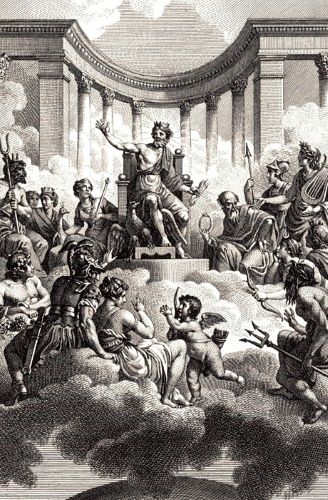
Ancient Greek thought marked a pivotal shift from mythological explanations to rational inquiry, emphasizing logic and observation. Greek thinkers sought natural causes for physical phenomena, laying the foundation for systematic science. Pioneers such as Thales of Miletus proposed that natural elements, not divine forces, governed the world, initiating a tradition of critical thinking.
Logic became central with philosophers like Parmenides and especially Aristotle, who formalized deductive reasoning and developed the syllogism—an essential tool for scientific argumentation. Aristotle’s influence was profound; he combined logical structure with empirical observation, particularly in biology, where he classified hundreds of species based on firsthand study. Though some of his conclusions were incorrect, his method of categorization and insistence on evidence were revolutionary.
Observation, though still limited by the tools of the time, was increasingly valued. Hippocrates and his followers advanced medicine by rejecting superstition in favor of clinical diagnosis and the careful recording of symptoms. In astronomy, figures like Hipparchus and Ptolemy used empirical data to map the heavens, foreshadowing modern celestial mechanics.
Greek science was not experimental in the modern sense, but its integration of logic and observation created a lasting legacy. It shaped the methodologies of later Islamic and European scholars, embedding reason at the heart of scientific pursuit.
The Influence of Islamic and Medieval Scholars

Islamic and medieval scholars played a crucial role in the development of the scientific method by preserving, expanding, and refining earlier knowledge, particularly that of the Greeks. During the Islamic Golden Age (8th to 14th centuries), scholars such as Alhazen (Ibn al-Haytham), Al-Razi, and Avicenna emphasized systematic experimentation, empirical observation, and critical reasoning. Alhazen’s Book of Optics is especially notable for articulating a form of scientific inquiry that relied on hypothesis, testing, and repeatable observation—principles that closely resemble the modern scientific method.
Islamic scholars translated and preserved Greek texts, but they also critiqued and improved upon them. They introduced rigorous standards for evidence and promoted experimentation over pure speculation, moving science closer to a testable, empirical discipline. These methods later traveled into Europe through interactions in Spain and during the Crusades.
In medieval Europe, figures like Roger Bacon and later William of Ockham and Robert Grosseteste continued this legacy. Bacon, influenced by Islamic thought, emphasized experimentation and the use of mathematics in natural philosophy. Ockham advocated for simplicity in explanations—a precursor to the principle of parsimony in science.
Together, Islamic and medieval thinkers bridged the ancient and modern worlds, transforming inherited knowledge into a more structured, investigative process that laid the groundwork for the Scientific Revolution.
The Scientific Revolution and the Rise of Empiricism
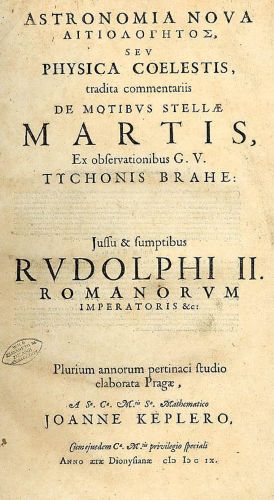
The Scientific Revolution, spanning the 16th to 18th centuries, marked a profound transformation in how knowledge about the natural world was pursued. At its core was the rise of empiricism—the belief that knowledge comes primarily from sensory experience and observation rather than tradition or pure reason. This shift challenged centuries of scholastic thought rooted in Aristotle and the Church.
Key figures like Nicolaus Copernicus, Galileo Galilei, Johannes Kepler, and Isaac Newton revolutionized astronomy and physics. Copernicus proposed a heliocentric universe, while Galileo’s telescopic observations provided empirical evidence that challenged geocentric models. Galileo also emphasized systematic experimentation and quantification, key components of modern science.
Francis Bacon championed the empirical method, advocating for inductive reasoning based on careful observation and data collection. In contrast, René Descartes emphasized deductive reasoning but also contributed to the mechanistic view of nature. Together, these approaches laid the foundation for the scientific method: hypothesis, experimentation, observation, and conclusion.
The revolution fostered a new spirit of inquiry that prioritized evidence over authority. Institutions like the Royal Society in England promoted collaborative research and peer review. Empiricism became central to scientific practice, marking a clear departure from earlier speculative traditions and paving the way for rapid advancements in all scientific fields.
Francis Bacon and Inductive Reasoning
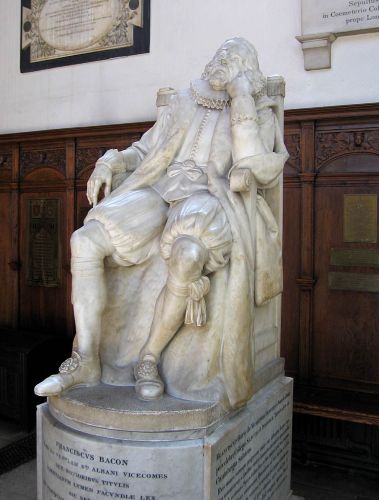
Francis Bacon (1561–1626) was a pivotal figure in the development of the scientific method, particularly through his advocacy of inductive reasoning. Rejecting the dominant Aristotelian reliance on deductive logic and abstract theorizing, Bacon argued that true knowledge must be grounded in empirical observation and systematic experimentation. His approach, outlined in works like Novum Organum (1620), emphasized moving from specific observations to general conclusions—a process known as induction.
Bacon criticized the “idols of the mind,” or cognitive biases, that distort human understanding, advocating for a clear and methodical process of inquiry. He believed scientists should collect data without preconceived notions, analyze it carefully, and build theories only after sufficient evidence had been gathered. This inductive method was meant to strip away error and lead to more reliable conclusions about the natural world.
Though Bacon did not conduct experiments himself, his philosophical framework profoundly influenced scientific thought. He laid the intellectual foundation for later experimentalists and empiricists, including Robert Boyle and Isaac Newton. Bacon’s vision of science as a collective, methodical effort to improve human life through practical knowledge helped usher in the Scientific Revolution. His legacy endures in modern scientific methodology, where observation and evidence remain central to the pursuit of truth.
René Descartes and Deductive Rationalism
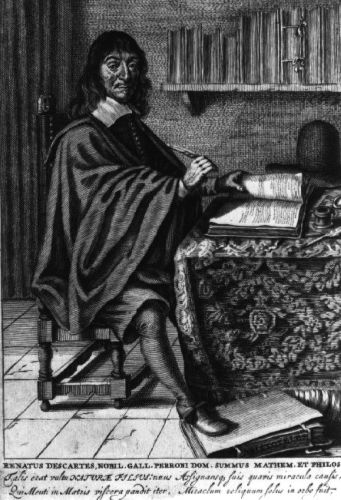
René Descartes (1596–1650) was a foundational figure in the history of science and philosophy, best known for developing deductive rationalism—a method of reasoning based on logic and doubt. Unlike Francis Bacon’s inductive approach, which emphasized empirical observation, Descartes sought certainty through systematic doubt and deduction. In his Discourse on the Method (1637), he famously declared “Cogito, ergo sum” (“I think, therefore I am”), asserting that reason itself is the foundation of knowledge.
Descartes believed that the universe operated according to mathematical principles and that true knowledge could be derived from clear and distinct ideas through logical reasoning. He advocated for breaking down complex problems into simpler components and solving them step by step—a process akin to mathematical proof. This method influenced the development of analytical geometry and early physics.
Though Descartes was skeptical of sensory experience, considering it potentially deceptive, he did not entirely reject observation. Instead, he believed that reason must guide interpretation of data. His approach helped shift science toward a more mechanistic view of nature, seeing the physical world as a machine governed by laws.
Descartes’ emphasis on rational structure and deductive clarity contributed significantly to modern scientific methodology, complementing the empirical focus of his contemporaries and successors.
Galileo, Newton, and the Experimental Method
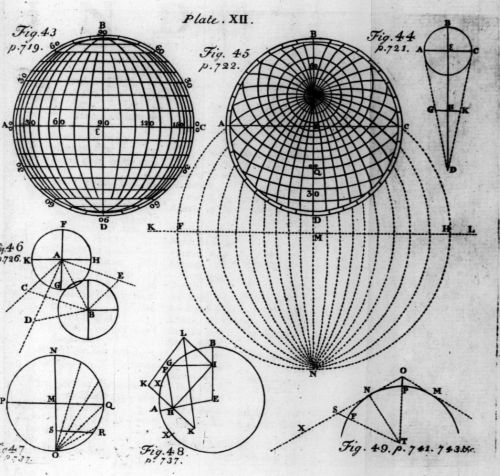
Galileo Galilei and Isaac Newton were central figures in the development and legitimization of the experimental method, which became a cornerstone of modern science. Galileo (1564–1642) was among the first to rigorously combine observation, experimentation, and mathematics to investigate natural phenomena. Through controlled experiments—such as rolling balls down inclined planes—he demonstrated that objects accelerate uniformly under gravity, challenging Aristotelian physics. His use of the telescope led to groundbreaking astronomical discoveries, including the moons of Jupiter, which provided strong evidence for the Copernican heliocentric model.
Galileo emphasized the importance of measurable, repeatable experiments to uncover the laws of nature, laying the foundation for the scientific method as a systematic process of inquiry.
Isaac Newton (1642–1727) built upon Galileo’s legacy, unifying terrestrial and celestial mechanics through his laws of motion and universal gravitation. In his Principia Mathematica (1687), Newton demonstrated how empirical observations could be synthesized into universal principles using both mathematical reasoning and experimental verification. He also conducted experiments with optics, revealing the nature of light and color.
Together, Galileo and Newton transformed natural philosophy into a discipline rooted in empirical evidence and mathematical analysis. Their work established the experimental method as a reliable path to understanding the physical world, influencing centuries of scientific progress.
The Enlightenment and Systematization of Science

The Enlightenment, spanning the late 17th through the 18th centuries, was a transformative era in which science became increasingly systematized, institutionalized, and intertwined with broader intellectual and cultural movements. Enlightenment thinkers championed reason, empirical evidence, and progress, believing that human understanding of the natural world could improve society. Science was no longer the pursuit of isolated individuals but a collaborative, organized endeavor supported by academies, journals, and public institutions.
Figures such as Carl Linnaeus, Antoine Lavoisier, and Georges-Louis Leclerc, Comte de Buffon advanced the classification and standardization of scientific knowledge. Linnaeus developed a systematic taxonomy for living organisms, while Lavoisier redefined chemistry through precise measurement and the identification of elements. These developments reflected a growing emphasis on order, method, and repeatability.
Philosophers like Denis Diderot and Jean le Rond d’Alembert compiled and disseminated scientific knowledge through works like the Encyclopédie, promoting science as a rational, secular pursuit open to all. Public lectures, scientific societies, and printed materials helped democratize access to scientific ideas.
The Enlightenment transformed science into a structured, empirical discipline with defined methods and objectives. It solidified the foundations of modern scientific inquiry and fostered a belief in progress through knowledge, laying the groundwork for future technological and intellectual revolutions.
19th-Century Advances: Hypothesis Testing and Methodological Refinement
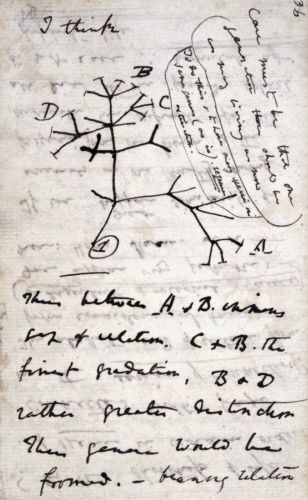
The 19th century witnessed significant refinement of the scientific method through the formalization of hypothesis testing and more rigorous methodologies. As science matured into a professionalized discipline, researchers increasingly emphasized precision, repeatability, and statistical analysis. The concept of formulating a testable hypothesis, then designing experiments or observations to confirm or refute it, became central to scientific inquiry.
In biology, Charles Darwin’s theory of evolution by natural selection, presented in On the Origin of Species (1859), exemplified this shift. Darwin gathered vast empirical data and developed a unifying hypothesis that could be tested and scrutinized by future research. In physics and chemistry, scientists like James Clerk Maxwell and Dmitri Mendeleev employed systematic observation and mathematical modeling to derive laws governing electromagnetism and the periodicity of elements.
The rise of controlled experimentation, often using standardized instruments and laboratory protocols, further enhanced methodological rigor. Simultaneously, the application of probability theory and statistics, pioneered by figures like Pierre-Simon Laplace and Francis Galton, allowed scientists to analyze data more objectively and account for uncertainty.
By the end of the century, science had become a structured process of inquiry, with hypothesis formation, experimental design, and data analysis forming a cohesive methodological framework that continues to shape modern scientific practice.
Karl Popper and Falsifiability
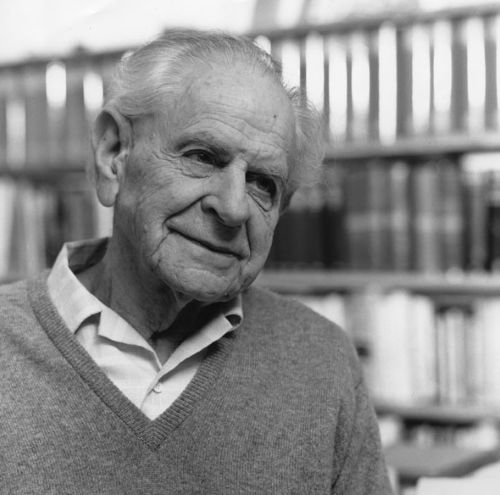
Karl Popper (1902–1994) was a pivotal 20th-century philosopher of science who redefined the scientific method by emphasizing the principle of falsifiability. In contrast to traditional views that stressed verification, Popper argued that scientific theories can never be conclusively proven—only falsified. According to him, what distinguishes science from non-science is not its ability to confirm hypotheses but its openness to disproof through empirical testing.
Popper proposed that a scientific theory must make bold, testable predictions that could, in principle, be proven false. For example, Einstein’s theory of relativity made precise predictions that could be empirically tested, such as the bending of light around massive objects—offering clear criteria for falsification. In contrast, theories that are too flexible or vague to be tested, like those found in pseudoscience or metaphysics, fall outside the realm of science.
Falsifiability thus became a crucial demarcation criterion. Popper’s framework influenced the way scientists approached theory construction and testing, encouraging a more critical and skeptical attitude. Rather than seeking endless confirmations, scientists were urged to design experiments aimed at challenging their own ideas.
Popper’s philosophy helped solidify the modern scientific method as a dynamic, self-correcting process rooted in critical inquiry, rather than a quest for absolute truth.
Thomas Kuhn and the Paradigm Shift

Thomas Kuhn (1922–1996) revolutionized the understanding of scientific progress with his concept of the “paradigm shift,” introduced in his influential work The Structure of Scientific Revolutions (1962). Kuhn challenged the traditional view that science progresses through a gradual accumulation of knowledge, suggesting instead that it undergoes periodic, disruptive shifts in which existing frameworks of understanding are replaced by entirely new ones.
According to Kuhn, normal science operates within a “paradigm”—a shared set of beliefs, methods, and assumptions that guide research in a given field. During periods of normal science, scientists work within the paradigm to solve puzzles and refine theories. However, anomalies or problems that cannot be resolved by the current paradigm begin to accumulate over time. When these anomalies become too great to ignore, a crisis occurs, prompting a scientific revolution.
A paradigm shift happens when a new theory or model is proposed that better explains the observed phenomena, displacing the old paradigm. This shift is not merely a gradual improvement but a profound rethinking of scientific principles, as seen in the transition from Newtonian physics to Einstein’s theory of relativity or from classical chemistry to quantum mechanics.
Kuhn’s idea of paradigm shifts emphasized that science is not an unbroken progression, but rather a series of discontinuous transformations, reshaping the way we understand the world.
Modern Interpretations: Bayesianism and Scientific Realism
Bayesianism and scientific realism are two influential philosophical perspectives on how scientific knowledge is acquired and understood.
Bayesianism, rooted in Bayesian probability theory, emphasizes updating beliefs based on evidence. According to this view, scientific theories are treated as hypotheses with associated probabilities. As new evidence is gathered, scientists update their confidence in these theories using Bayes’ theorem. Bayesianism provides a mathematical framework for assessing how well a theory aligns with observed data, with the probability of a hypothesis being adjusted based on prior knowledge and new evidence. This approach highlights the importance of uncertainty and allows for dynamic adjustments as new data emerge, making it a powerful tool in scientific inference.
Scientific realism, on the other hand, is the belief that the aim of science is to accurately describe the world as it truly is, independent of human perception or theories. Realists argue that scientific theories, when successful, provide a true or approximately true representation of unobservable entities like electrons or black holes. They contend that the success of a theory in predicting phenomena is evidence that it is likely to reflect reality, even if some aspects remain unobservable.
While Bayesianism focuses on the process of belief revision based on evidence, scientific realism addresses the ultimate goal of science: to uncover objective truths about the world. Both approaches shape how we interpret scientific progress and the nature of knowledge.
The Scientific Method in the 21st Century
The scientific method in the 21st century has evolved with advances in technology, collaboration, and interdisciplinary approaches, yet it remains grounded in core principles of hypothesis testing, observation, and empirical evidence. The digital age has dramatically expanded the scope and speed of scientific inquiry. Advanced computing tools, big data analytics, and artificial intelligence (AI) now play crucial roles in hypothesis generation, data collection, and analysis, enabling scientists to process vast amounts of information quickly and with greater precision.
The rise of global collaboration has also transformed the scientific process. Researchers can now work across borders in real time, sharing data, results, and tools through open-access platforms and international networks. This has fostered more transparent and reproducible research, though challenges with misinformation and research integrity remain.
Interdisciplinary methods are increasingly common, combining insights from fields such as biology, physics, and computer science to address complex problems like climate change, public health, and artificial intelligence. The integration of diverse perspectives enhances the robustness of scientific findings.
The scientific method today is more iterative, with rapid prototyping, real-time data collection, and continuous refinement of theories. This agility allows for faster advancement in fields like genomics, space exploration, and quantum computing, further solidifying science as a dynamic and evolving discipline.
The Role of Technology and Big Data
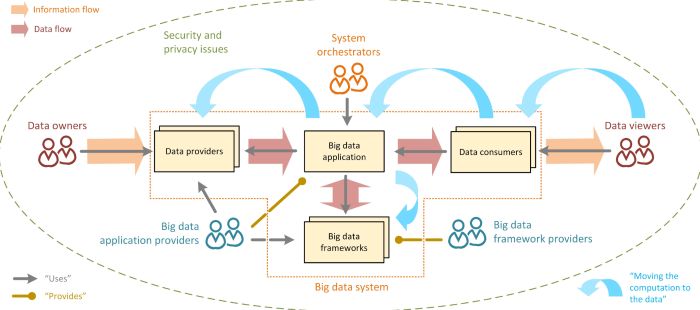
The role of technology and big data in the scientific method has fundamentally transformed the way research is conducted in the 21st century. Advances in computing power, data storage, and analytical tools have revolutionized the process of hypothesis testing, data collection, and analysis. Scientists now have the ability to process vast amounts of data—far beyond what could have been imagined just a few decades ago. This has been particularly impactful in fields like genomics, climate science, and astrophysics, where large datasets are essential for making meaningful conclusions.
Big data allows for more comprehensive and precise testing of hypotheses. With access to extensive datasets, researchers can identify patterns, correlations, and anomalies with greater accuracy, helping to refine existing theories or generate new ones. Machine learning algorithms and AI-driven analytics enable researchers to uncover insights that would be nearly impossible to detect using traditional methods.
Technology also enables real-time data collection and collaboration, improving the speed and transparency of the scientific method. Remote sensing, laboratory automation, and cloud computing allow for continuous monitoring and faster experimental iterations, reducing the time between hypothesis generation and testing.
However, the integration of big data and technology also introduces challenges, such as ensuring data quality, privacy concerns, and managing the sheer volume of information. Despite these challenges, the impact of technology on the scientific method is undeniable, accelerating discovery and innovation.
Science and Society: Trust and Application
Science and society share a complex and interdependent relationship, with trust and the application of scientific knowledge playing central roles in shaping both. Trust in science is crucial for its progress and societal acceptance. Over the centuries, scientific advancements have improved lives by providing solutions to global challenges, from medicine to technology. However, public trust in science can fluctuate, influenced by factors like misinformation, political agendas, and perceived biases in research. For science to have a meaningful impact, it must be communicated effectively, transparently, and ethically, fostering confidence that its findings are based on rigorous evidence.
The application of scientific knowledge also has profound societal implications. Breakthroughs in fields such as biotechnology, environmental science, and artificial intelligence promise to revolutionize industries, improve health, and address climate change. Yet, the potential for misuse or unintended consequences remains a concern. For example, genetic engineering or AI technologies raise ethical questions about human rights, privacy, and autonomy.
As science becomes increasingly integrated into everyday life, its application requires careful consideration of social, ethical, and political factors. Policymakers, scientists, and the public must collaborate to ensure that scientific advancements serve the common good. Balancing innovation with ethical responsibility and public trust remains a critical challenge for science in the 21st century.
Teaching and Communicating the Scientific Method
Teaching and communicating the scientific method effectively is essential for fostering a deeper understanding of science and its processes, both in educational settings and within society. At its core, the scientific method is a systematic approach to problem-solving that involves observation, hypothesis formation, experimentation, and analysis. Educators play a pivotal role in helping students understand not just the steps, but the reasoning behind them, ensuring that students appreciate science as an evolving process rather than a collection of facts.
In classrooms, hands-on activities and inquiry-based learning can bring the scientific method to life. Encouraging students to ask questions, form hypotheses, design experiments, and analyze data builds critical thinking and problem-solving skills. These experiences help students grasp that science is iterative, with conclusions constantly tested and refined based on new evidence.
For effective communication beyond the classroom, scientists must translate complex findings into accessible language for the public. This includes addressing both the “how” and “why” of research to create meaningful connections with non-experts. Using clear visuals, infographics, and analogies can help demystify complicated concepts. Public communication should also acknowledge the uncertainties and limitations of science, fostering trust and engagement.
Teaching and communicating the scientific method empower individuals to critically evaluate information, make informed decisions, and contribute to society’s understanding of the world.
Conclusion: The Scientific Method as Evolving Process
The scientific method is not a rigid, step-by-step formula but an evolving process that adapts as new insights, tools, and technologies emerge. Historically, the scientific method has evolved from simple observation and categorization to a complex, systematic approach to testing and refining theories. Early scientists, like Aristotle, based their methods on logical reasoning and philosophical principles. However, as empirical research became central to scientific inquiry, figures like Galileo and Newton emphasized observation, experimentation, and mathematical modeling.
Today, the scientific method remains rooted in hypothesis testing, experimentation, and data analysis, but it has evolved to incorporate modern technologies, interdisciplinary approaches, and iterative feedback loops. For example, in fields like genomics or climate science, large-scale data collection and computational models are integral to hypothesis generation and testing. These advances have enabled scientists to tackle more complex questions that were previously unattainable.
Moreover, the scientific method now emphasizes the importance of uncertainty, reproducibility, and peer review. As science becomes increasingly collaborative, interdisciplinary, and global, the method itself is continuously refined and adapted to the specific challenges of different fields.
In this sense, the scientific method is dynamic—always evolving to reflect new discoveries, better tools, and changing philosophical perspectives. This adaptability ensures that science remains a powerful tool for understanding and shaping the world around us.
Originally published by Brewminate, 05.16.2025, under the terms of a Creative Commons Attribution-NonCommercial-NoDerivatives 4.0 International license.


